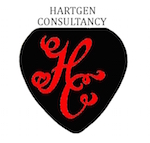Important Messages, such as Service Disruption and Opening Times.
Are usual opening hours are Monday to Friday 9 AM to 5 PM UK time, excluding public holidays.
StationPlaylist for JAWS; More Than Just a Bunch of Scripts.
You may have heard of the StationPlaylist suite of products, allowing you to host your own show through to running your own radio station. But what you might not realise is that the JAWS scripts for the entire StationPlaylist suite go way beyond reading what is on the screen, giving you access to pertinent information relating to the products or making the application accessible. They go much further and adapt the program specifically for use by blind broadcasters.
As you can imagine, the StationPlaylist products are designed ultimately for anyone especially sighted users and by and large they are accessible to screen-readers. But there are aspects of a program that blind people need especially in high pressure broadcasting situations which you perhaps wouldn't think about unless you are blind and use the tools themselves. Here are just a few of the many adaptations which help.
1. When using a screen-reader with StationPlaylist Studio, and you move through your playlist with the arrow keys, there is a slight lack of responsiveness from the time you press the key to receiving useful feedback through the screen-reader. That is fine for a sighted user as he or she will not be using such a tool. But that's not the way blind people work. We need to be able to skim down a playlist rapidly to find what we are looking for. To this end, JAWS contains Quick navigation Mode. This takes a snapshot of the playlist and allows you to browse it rapidly. The very moment you strike an arrow key you get an instant response. Want to add or remove items? No problem. Quick Nav mode constantly updates its snapshot so you can continue browsing quickly with the new content.
2. When you search for a song in the Studio product, and if you did not use JAWS, you would have no idea that the list of results had been computed. So you would not know to press the built-in shortcut key which is ALT+R to set focus to the results list. JAWS takes care of this by automatically setting focus when the list appears.
3. Browse a playlist, and inadvertently press the Escape key. Then try inserting a new song. We've all done it. As blind people, Escape is something we have a habit of pressing quite a lot. Because you pressed the Escape key, that unselects all items so that the newly inserted song is placed at the bottom of the list. JAWS prevents you from doing this. If you are blind, you cannot see that has happened and you would think the track has not been inserted.
4. Search for a song and insert it into your playlist. As a blind person, you think the song is highlighted ready to play out. But it isn't. JAWS will automatically select that if desired so you can get it to air right away.
5. Create a voice break using the StationPlaylist voice-tracking tool, then save it. Ordinarily, focus moves back to the top of the list which seriously decreases productivity. With JAWS and our solution for SPL, focus automatically moves to the point where the voice-track was created so you can move onto the next one.
6. Would you like to do a lot of voice-tracking to make life easier? With our accessible solution for StationPlaylist, you can play many jingles and effects directly into your VT's. Sighted users do not have anything like this flexibility, but it goes a long way to giving your shows that extra professional feel.
7. StationPlaylist has a concept called Break Notes; sets of instructions you can send to SPL Studio to carry out specific actions. If you do not have StationPlaylist Creator, (containing a special dialog box for inserting Break Notes), it's more than quite a bind to insert them manually. Our solution for JAWS and SPL has its own Break Note dialog, not only allowing you to insert the special Break Notes, but you can even save favourites and context sensitive help is built right in.
This is just the tip of the iceberg. Creating a truly accessible and efficient interface for a program is about a great deal more than reading the screen. It's about taking into account the needs of blind people with varying levels of ability. We're not "dumbing down" the interface or over-simplifying it. It's guarding against those problems in which some people may find themselves through to making it ultra-efficient for those who want to get things done quickly.
Best of all, there is plenty of training available. Our training courses in many aspects of using StationPlaylist have a total running time of 22 hours, so there's plenty to get your teeth into.
More information about StationPlaylist is here and our training course page can be accessed here.
